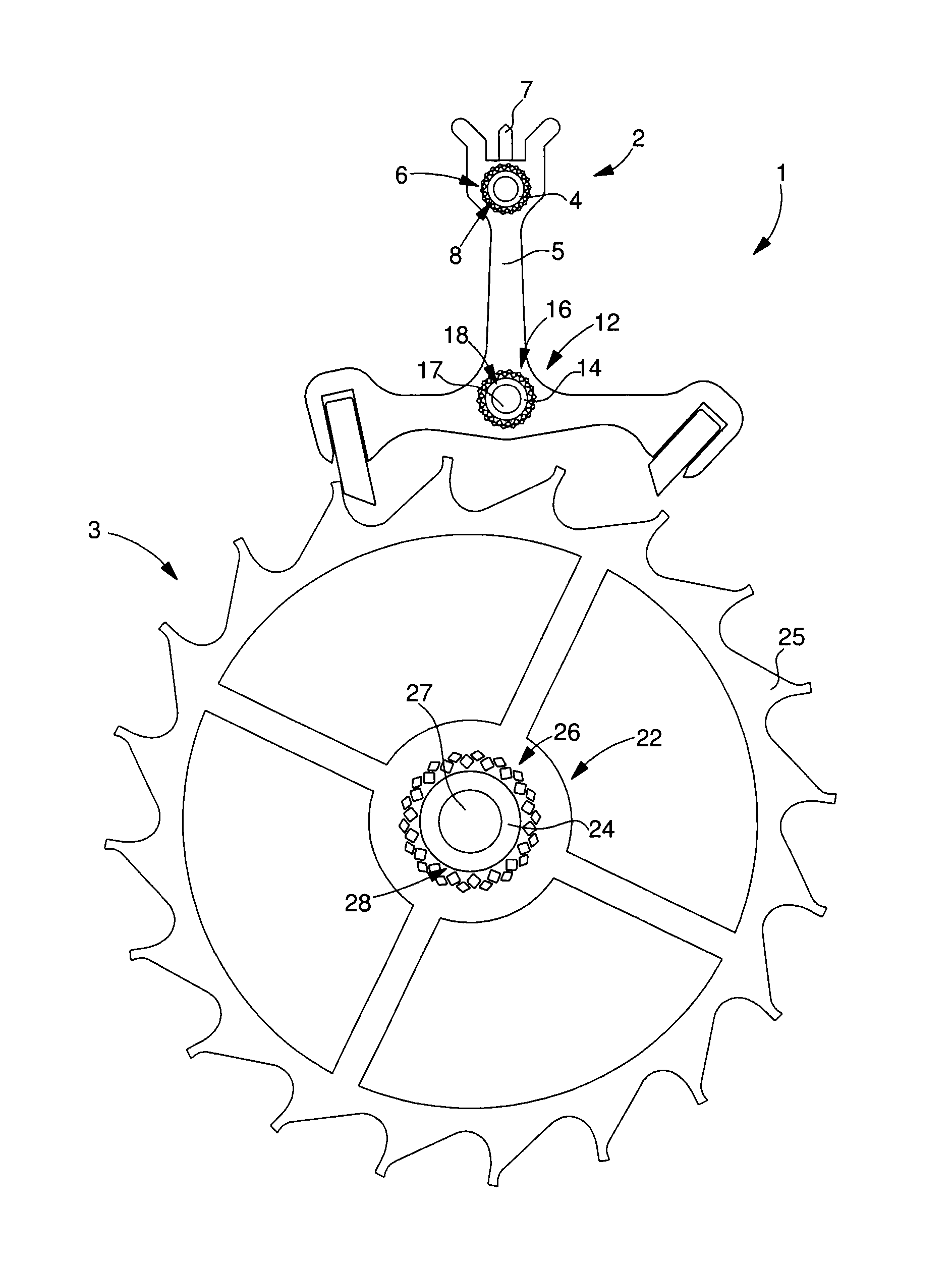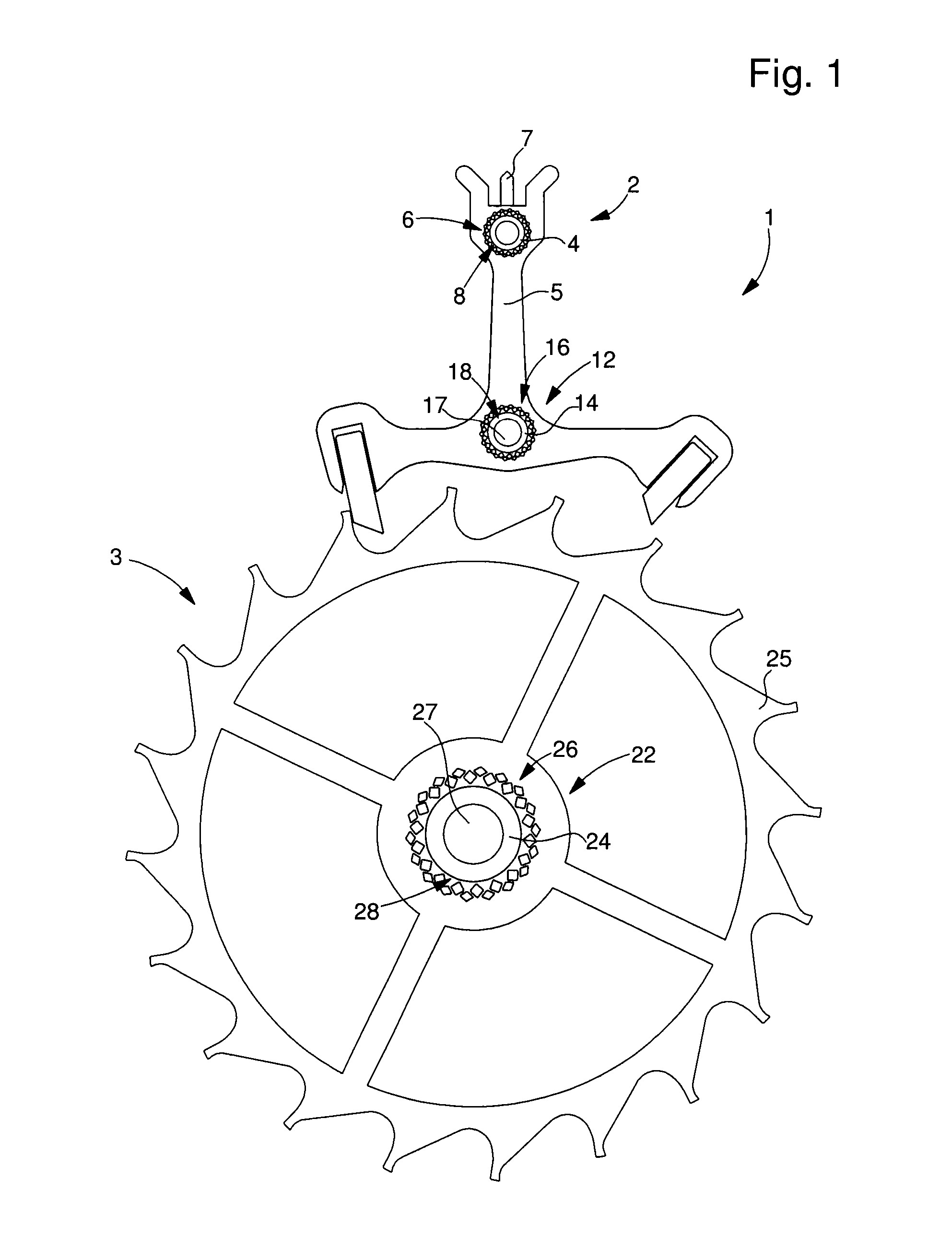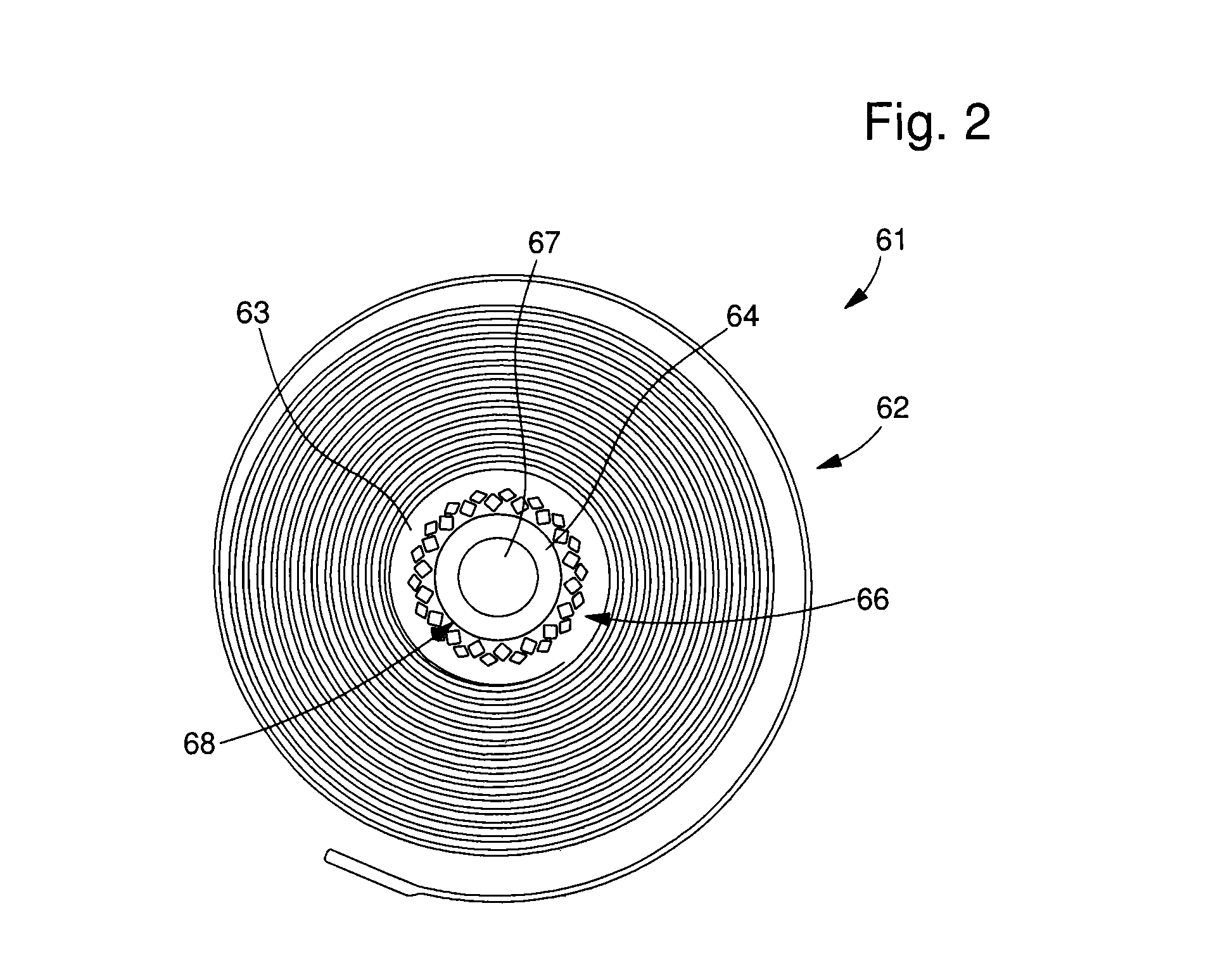Assembly of a part that has no plastic domain
a technology of plastic parts and parts, applied in the field of parts, can solve the problems of silicon parts breaking, parts not binding each other sufficiently well, and operation requires extremely delicate applications
- Summary
- Abstract
- Description
- Claims
- Application Information
AI Technical Summary
Benefits of technology
Problems solved by technology
Method used
Image
Examples
first embodiment
[0062]Examples of pierced holes are shown in FIGS. 3 to 8. illustrated in FIGS. 3 to 6, the pierced holes are formed at a distance from and around the aperture by two series of diamond-shaped holes distributed in a quincunx arrangement so as to form beams arranged in secant V-shapes.
[0063]FIG. 3 is a diagram of pierced holes 6, 16, 26, 66 of FIGS. 1 and 2. For more simplicity, only the wheel 3 references are used again in FIG. 3. FIG. 3 shows pierced holes 26, which preferably pass through the entire thickness of body 25, made of fragile material. Pierced holes 26 are distributed at a distance from and around aperture 28 which is also preferably formed to pass through the entire thickness of body 25 made of fragile material.
[0064]As seen in FIG. 3, pierced holes 26 form a first series of holes 31, the farthest from aperture 28, and a second series of holes 33, which are diamond-shaped and in a quincunx arrangement. FIG. 3 shows that pierced holes 31, 33 thus form V-shaped beams 32 ...
second embodiment
[0071] illustrated in FIGS. 7 and 8, the pierced holes are formed at a distance from and around the aperture by a first series of oblong holes distributed in a quincunx arrangement with a second series of triangular holes, the second series being closest to the circular aperture, each triangular hole communicating with the aperture via a notch so as to form beams that are radially moveable according to the thickness of the oblong holes.
[0072]Thus, FIG. 7 shows pierced holes 46 which preferably pass through the entire thickness of body 25, made of fragile material. Pierced holes 46 are distributed at a distance from and around aperture 28 which is also preferably formed to pass through the entire thickness of body 25 made of fragile material.
[0073]As seen in FIG. 7, pierced holes 46 form a first series of oblong holes 51 and a second series of triangular holes 53. According to the second embodiment, the two series of holes 51, 53 are arranged in a quincunx arrangement.
[0074]Further, ...
PUM
| Property | Measurement | Unit |
|---|---|---|
| distance | aaaaa | aaaaa |
| displacement | aaaaa | aaaaa |
| displacement | aaaaa | aaaaa |
Abstract
Description
Claims
Application Information
 Login to View More
Login to View More - R&D
- Intellectual Property
- Life Sciences
- Materials
- Tech Scout
- Unparalleled Data Quality
- Higher Quality Content
- 60% Fewer Hallucinations
Browse by: Latest US Patents, China's latest patents, Technical Efficacy Thesaurus, Application Domain, Technology Topic, Popular Technical Reports.
© 2025 PatSnap. All rights reserved.Legal|Privacy policy|Modern Slavery Act Transparency Statement|Sitemap|About US| Contact US: help@patsnap.com



